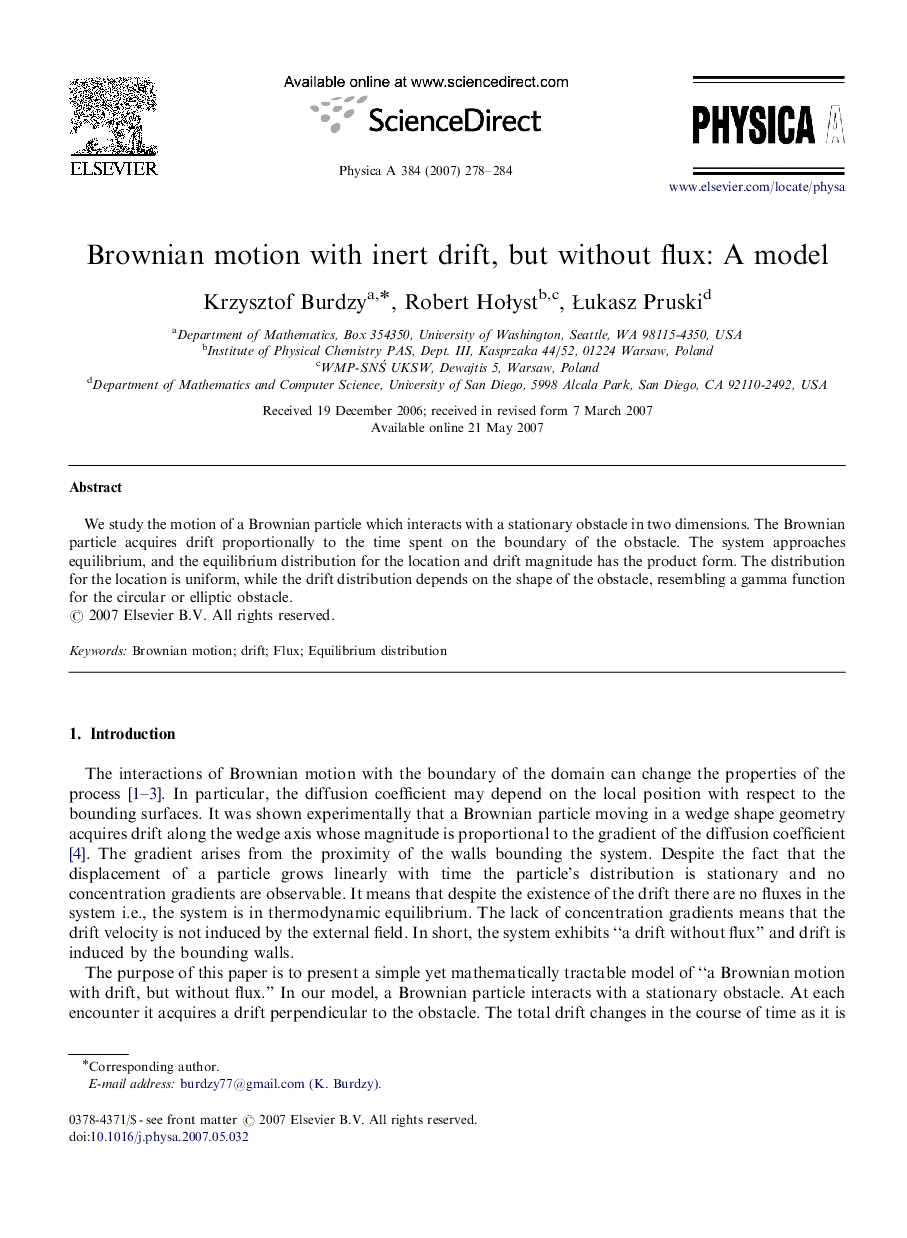| Article ID | Journal | Published Year | Pages | File Type |
|---|---|---|---|---|
| 975351 | Physica A: Statistical Mechanics and its Applications | 2007 | 7 Pages |
Abstract
We study the motion of a Brownian particle which interacts with a stationary obstacle in two dimensions. The Brownian particle acquires drift proportionally to the time spent on the boundary of the obstacle. The system approaches equilibrium, and the equilibrium distribution for the location and drift magnitude has the product form. The distribution for the location is uniform, while the drift distribution depends on the shape of the obstacle, resembling a gamma function for the circular or elliptic obstacle.
Related Topics
Physical Sciences and Engineering
Mathematics
Mathematical Physics
Authors
Krzysztof Burdzy, Robert HoÅyst, Åukasz Pruski,
